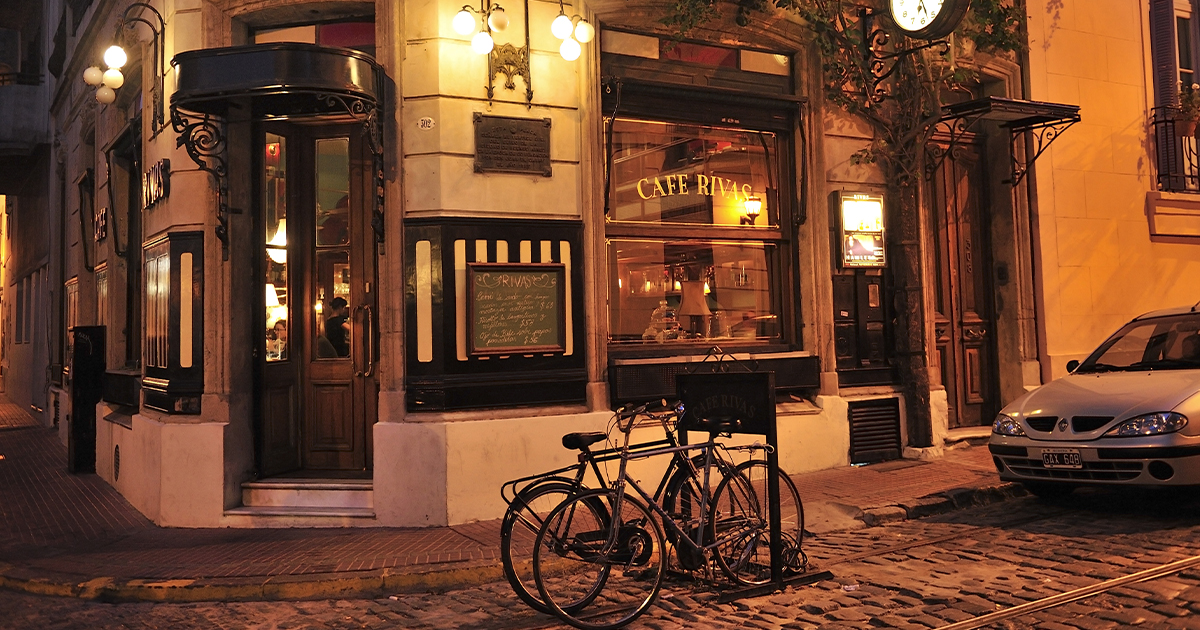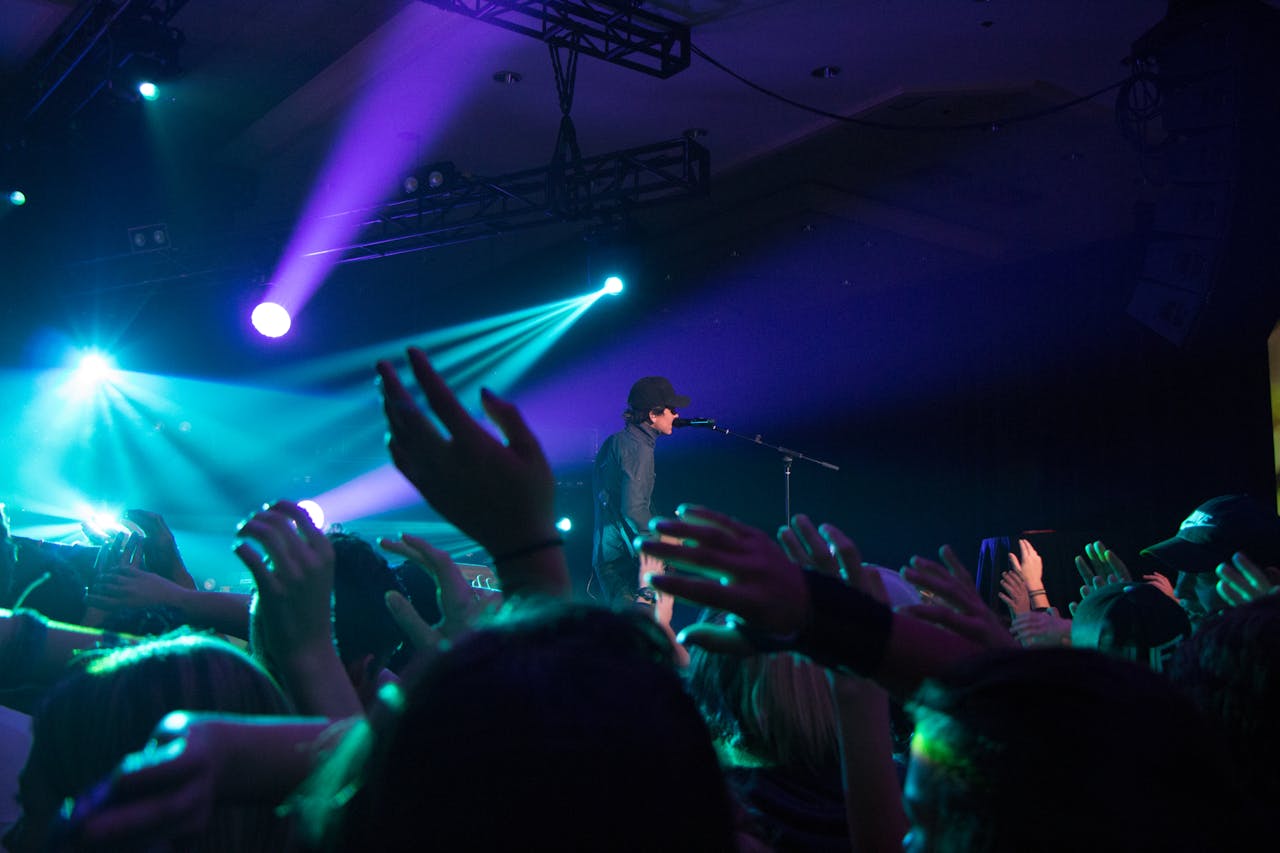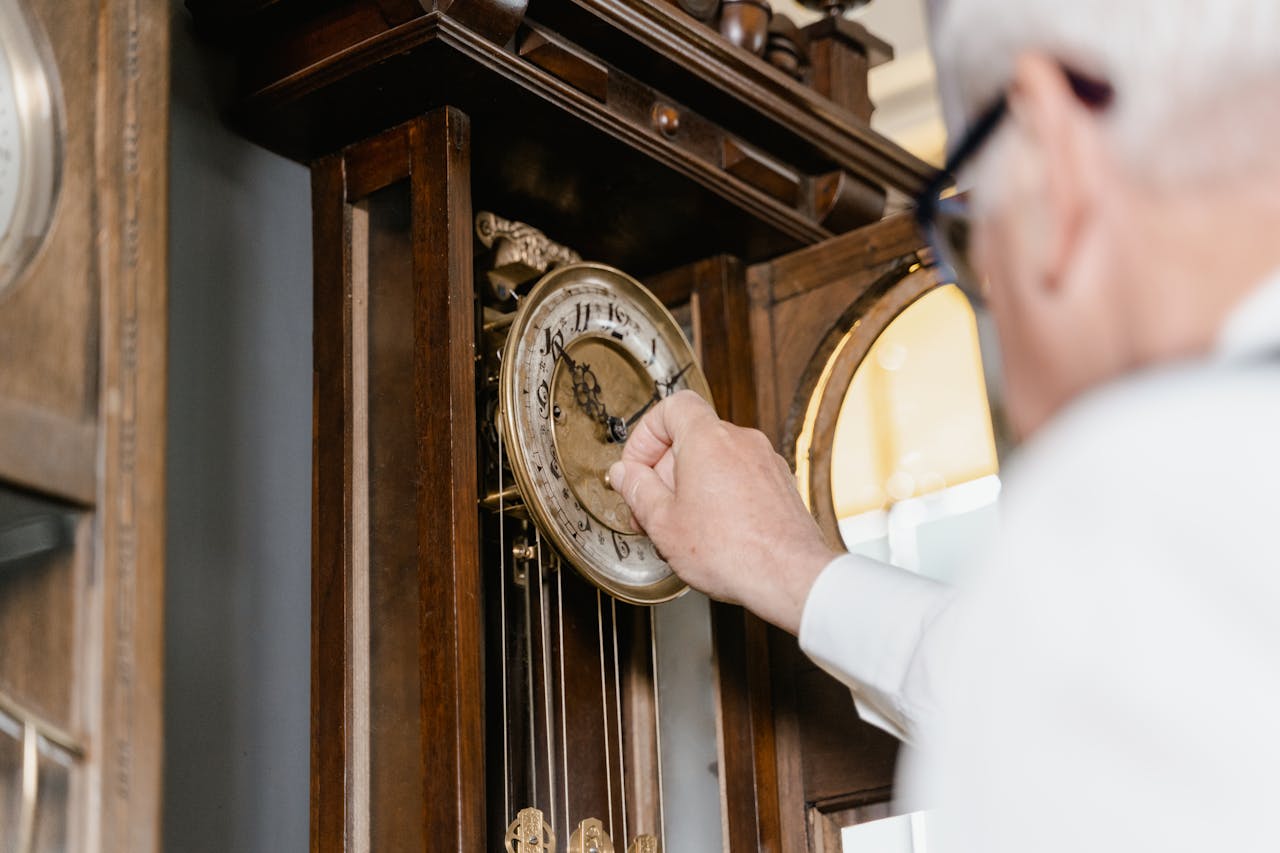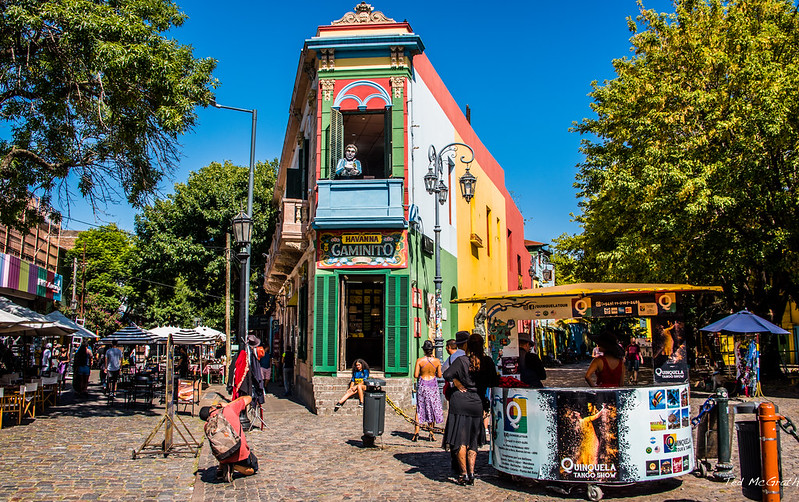Calling All Night Owls
Argentina is known as the best place for night owls—they stay up late and sleep in the next morning, eat four meals a day, they're late for everything, and they schedule their work days around their afternoon naps.
But that’s not all.
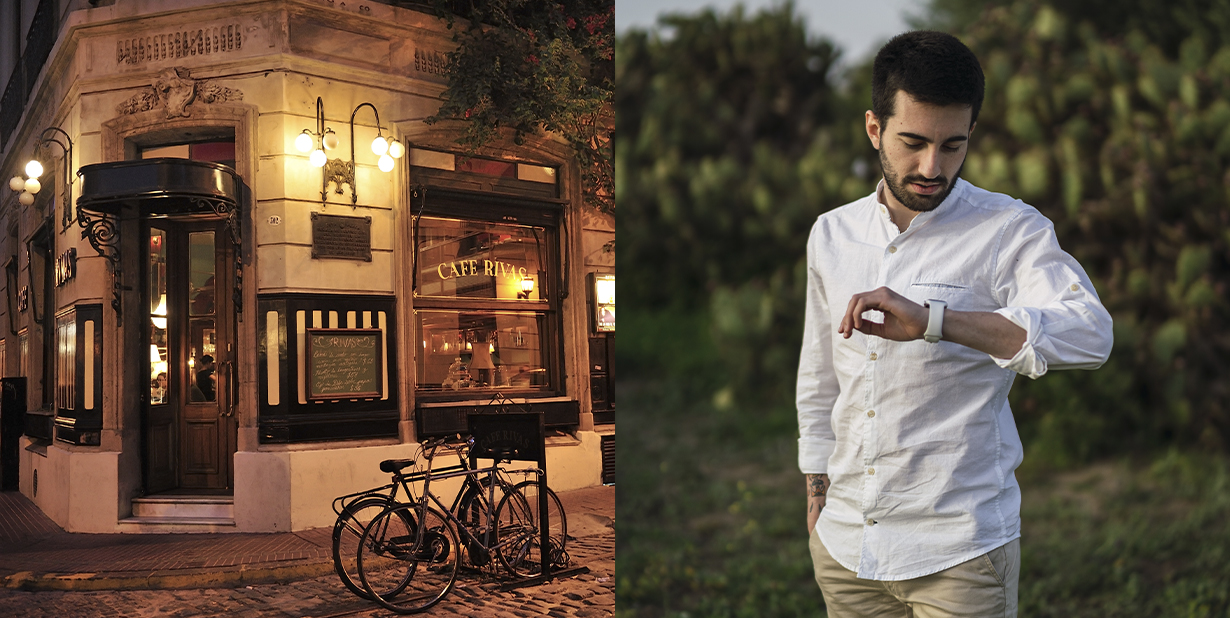
Punctuality
Let’s start with punctuality in general. Argentines are rarely on time. In fact, being 30-45 mins late (for almost anything) is the norm in most parts of Argentina. This includes meetings, events, parties, etc.
Punctuality is not a virtue in Argentina. If you’re late, you’re early. Ana Blazic Pavlovic, Shutterstock
Ana Blazic Pavlovic, Shutterstock
Exceptions
There are few exceptions in which Argentines feel it is important to show up on time: the theater, soccer games, and lunchtime (there’s a reason for this one.) tuthelens, Shutterstock
tuthelens, Shutterstock
Expectations of Others
The thing is, Argentines expect foreigners to be on time, even though they won’t be. So if you’re doing business, arrive on time—but be prepared to wait.
Priorities
Argentines prioritize people over punctuality. They feel it is more important to build relationships than worry about the time.
Doing Business in Argentina
If you’re doing business in Argentina, you’ll find that your host will spend a great deal of time getting to know you and engaging in conversation before getting down to business—this may include multiple separate meetings, too.
Meal Times: Breakfast
Most people in Argentina have four meals per day.
Breakfast is any time before 10:00am—some people will have two small breakfasts in this time, the first being around 7:00am (if they’re awake at that time) and the second being closer to 10:00am.
Both of these are typically light meals consisting of toast, fruit and/or yogurt.
Meal Times: Lunch
Lunch is typically had sometime between 12:00pm and 2:00pm. More so on the earlier side if they did not have the second breakfast.
Lunch is usually their biggest meal, including meats, salads, sandwiches, quiches, empanadas, etc.
 Alexandr Vorobev, Shutterstock
Alexandr Vorobev, Shutterstock
Meal Times: Afternoon Snack
The afternoon snack is typically had around tea time, 5:00pm. This is not dinner. This afternoon snack is had to hold people over until the late dinner time.
Afternoon snacks are light meals similar to breakfast, with coffee, biscuits, bread dipped in sweet milk, or light sandwiches.
Meal Times: Dinner
Dinner is usually after 10:00pm. Foreigners refer to it more as a midnight meal than dinner. At some restaurants you can get dinner as early as 8:00pm, and it will be open until after midnight.
Dinner is not the largest meal usually, but it does include typical dinner sized meals.
Weekend Meals
On weekends, Argentines eat their meals even later than during the week. And they are big on get-together and parties, and staying up very late.
Dinner Parties
If you’re invited to a dinner party in Argentina it is expected that you will arrive 30-45 mins after the specified time. If you arrive at the time you were invited, you will be early and the host may not be ready.
Nightlife
The nightclubs and bars in Argentina are empty until after 11:30pm. Even if they are open earlier, it’s not likely anyone will be there. Nightlife in Argentina starts very late.
Starting the Day
Given that Argentines seem to be up all night, eating and socializing, you may be wondering what time they get up in the morning? And how do they manage to function all day after being up all night?
Mornings
First of all, Argentines are used to this schedule, so it’s normal for them. Many people go to bed around midnight or so, and wake up around 6:00am-7:00am, having still had a 6-7 hour sleep.
Many people also sleep in much later.
Mornings: Businesses
In the smaller towns of Argentina, businesses have a later start time, opening around 9:00-10:00am—some even later, depending on the owner’s preference.
Early Mornings
If you walk the streets of Argentina in the wee hours of the morning, you’ll be one of very few people, and your shop options will be limited.
Coffee Breaks
Coffee breaks are important in Argentina, and to-go coffee is a no-go. Argentines believe a coffee break should be exactly that—a break. You will sit down with your friends or coworkers and enjoy a well-deserved cup of coffee.
This encourages people to slow down and rest often.
Afternoon Naps
On that note, another very common part of the day includes the siesta. Nearly all Argentines will stop what they’re doing and have an afternoon nap. It happens between lunch and afternoon snack, and can be anywhere from 1-2 hours long.
Siestas: Businesses
Siestas are so important that many businesses, especially in the smaller towns, will close up shop for a few hours so they can go home for their nap.
Siestas: A Generational Thing
It is said that the siesta tradition is slowly retiring, and most of the people who take part in afternoon naps are retired folk, elderly, or those whose employment schedules work around it.
Not everyone takes a siesta during the week anymore—but it is still often enough that it is worth mentioning.
Back to Punctuality
As mentioned previously, Argentines make an exception in regards to punctuality when it comes to lunchtime, and this is because of the siesta. If you’re late for lunch, it cuts into your siesta time.
So, although it is common to be late for almost everything else, lunchtime is not one of them.
Businesses Opening Hours
Because they start later and close for their siesta, many of these shops will be open much later at night to accommodate. Most shops are open until 8:00pm or later.
Working Hours
Typical working hours for most employees are in two main shifts: 8:30am-12:00pm and 4:00-8:00pm. This accommodates the afternoon naps they take. Employees will either work both shifts, or only one. Tim Mossholder, Pexels
Tim Mossholder, Pexels
Working Hours Allotment
Another important thing to note is that it is apparently unlawful to work more than 48 hours per week in Argentina. Overtime is a rarity. krakenimages.com, Freepik
krakenimages.com, Freepik
School Schedules
The school week runs from Monday to Friday. Most schools divide their day into two sessions and the children attend one session per day. ededchechine, Freepik
ededchechine, Freepik
School Hours
The first session runs from around 8:15am to 12:15pm, and the second session runs from 1:00pm to 5:15pm.
This may vary depending on school and location. Yan Krukau, Pexels
Yan Krukau, Pexels
School Lunches
Since school is generally taught in four-hour shifts, most schools do not include lunch breaks. Though, this can vary. Some schools may start at 8:00am and end later, around 1:00pm, and may include a lunch break.
Otherwise, kids eat when they get home. Yan Krukau, Pexels
Yan Krukau, Pexels
Why is everything so much later in Argentina?
Argentina gets a lot of their customs from the Spanish, who after the war in 1940 changed to Central European Time (CET), which set their schedules (specifically meal times) later.
So basically, time change is to blame.
Late Working Hours
Since adapting to the time change, (and having numerous breaks during the day) many people work later into the evening—around 8:00-9:00pm. This naturally pushes dinner later into the night.
How do children manage the late schedule?
Children in Argentina are either used to it, or their parents make them dinners earlier. For the children who attend the later school day, they will eat before and after school, and go to bed not long after that. Ketut Subiyanto, Pexels
Ketut Subiyanto, Pexels
Young Families
Children still get adequate sleep, even if that means alternating their meal schedules different from that of their parents—though it should also be noted that families with small children may change their schedule as a whole to accommodate their young family. RDNE Stock project, Pexels
RDNE Stock project, Pexels
Tourism
Tourist areas in Argentina are more accommodating to foreigners than the small towns. Business are open earlier, and most don’t close for siestas.
Night Owls Unite
Argentina is known as being a whole country for night owls, given their late meals and elaborate night-life. You won’t miss much when you sleep in after a night of social dining, and your employer won’t expect you too early.
Best of all, you can recuperate during your afternoon siesta! Kindel Media, Pexels
Kindel Media, Pexels
Final Thoughts
If you’re looking to experience traditional Argentine culture, check out the smaller towns where you can indulge in relaxing coffee breaks, big lunches, afternoon naps, and late-night socializing.

